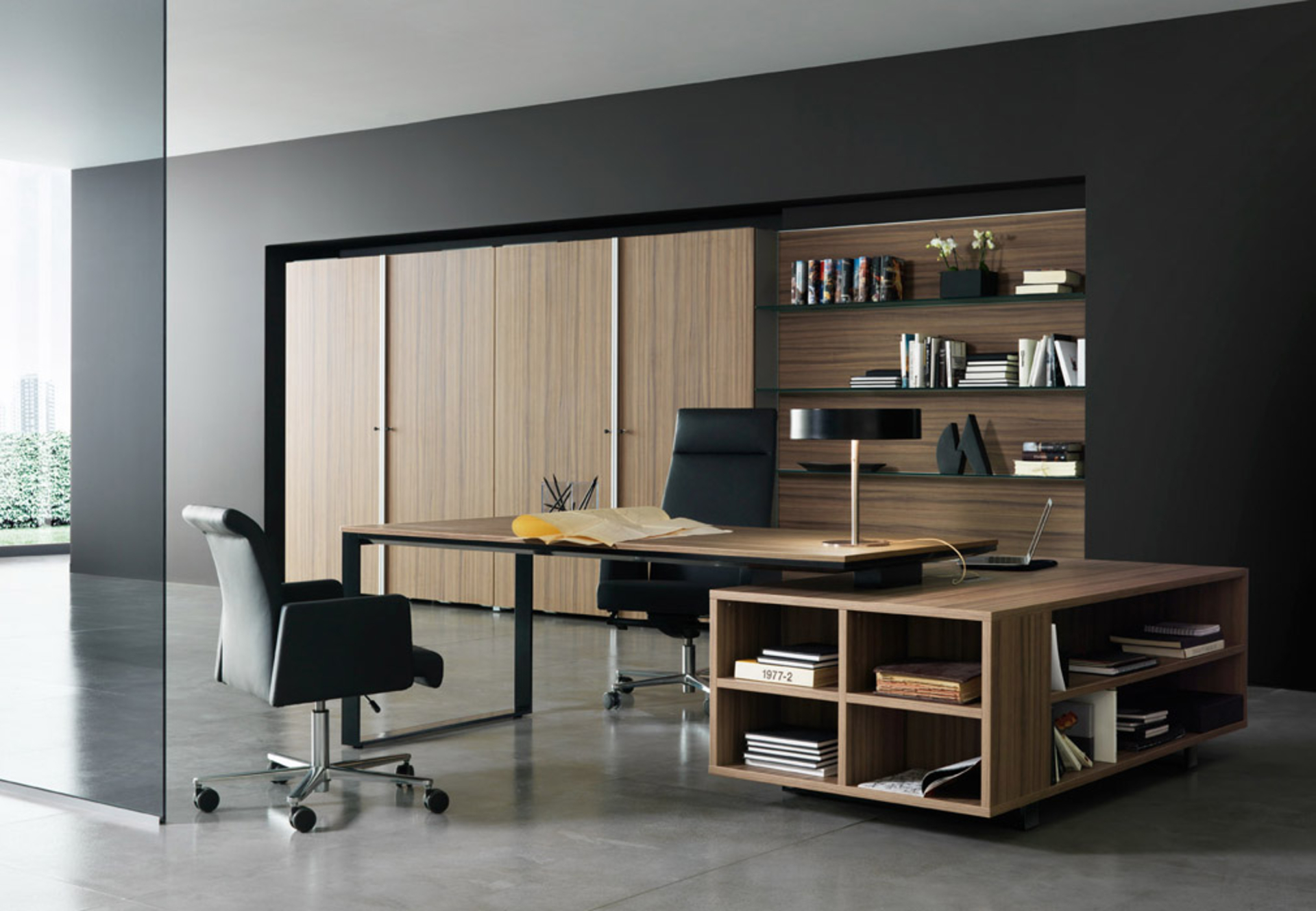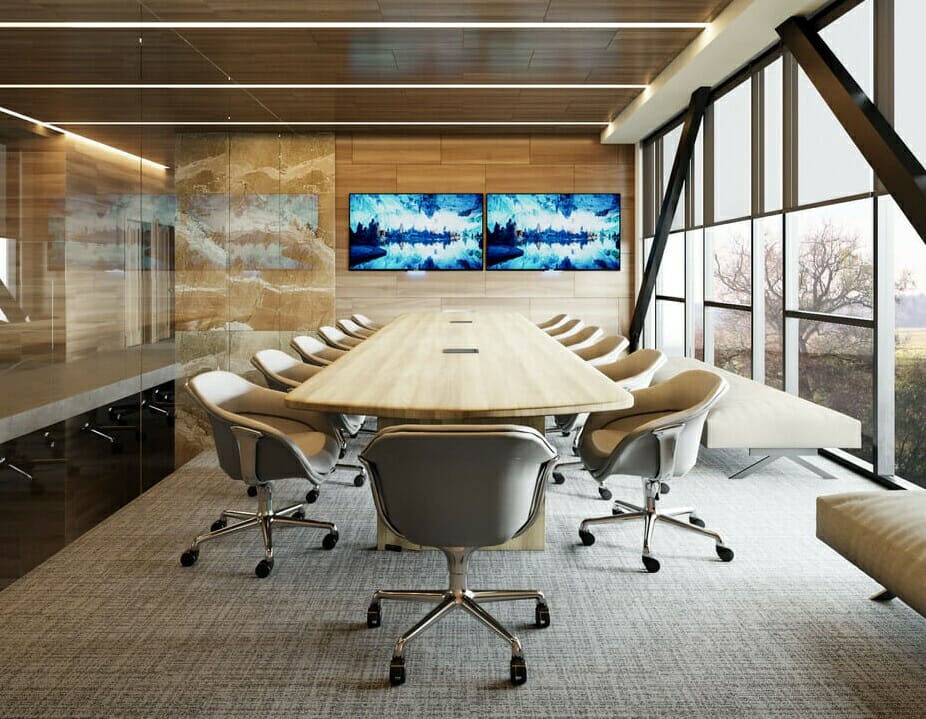In today’s fast-paced world, the workspace has evolved far beyond just a desk and a chair. The design and layout of office furniture interiors are crucial to creating an environment that fosters productivity, creativity, and comfort. Throughout my career in office design, I’ve learned that the right furniture plays a significant role in achieving these goals. In this comprehensive guide, we’ll delve into the various aspects of office furniture interiors and design, providing you with insights and tips to create a functional workspace that inspires.
The Importance of Office Furniture Design
Before diving into specific types of furniture, let’s explore why office furniture design matters.
1. Impact on Productivity
Good design can significantly enhance employee productivity. Comfortable chairs and desks that promote good posture can reduce fatigue, allowing employees to focus on their tasks effectively.
2. Aesthetic Appeal
The visual aspect of your workspace contributes to the overall atmosphere. A well-designed office can impress clients and make employees feel valued.
3. Flexibility and Space Utilization
Efficient use of space ensures that every inch of your office is functional. Smart furniture arrangements can create versatile areas that cater to different work styles.

Key Elements of Office Furniture Interiors
1. Ergonomics
Ergonomics is the science of designing your workspace to fit the user’s needs, ensuring comfort and efficiency. Consider the following:
- Chair Height: A chair that allows your feet to rest flat on the floor, with knees at a 90-degree angle.
- Desk Height: Desks should accommodate your natural arm position to avoid strain.
- Monitor Placement: The monitor should be at eye level to prevent neck strain.

2. Material Choices
Different materials can affect both the look and the feel of an office. Common materials include:
- Wood: Offers warmth and a classic aesthetic.
- Metal: Provides durability and a modern edge.
- Plastic: Affordable and versatile, often used for modern designs.
3. Color Schemes
Color can influence mood and productivity:
- Blue: Promotes calmness and enhances focus.
- Green: Associated with balance and can reduce eye strain.
- Yellow: Stimulates creativity but should be used sparingly to avoid overstimulation.

Types of Office Furniture
1. Desks
Desks come in various styles to suit different needs:
- Executive Desks: Large and stylish, suitable for managerial positions.
- Standing Desks: Encourage movement and can help prevent health issues.
- Collaborative Desks: Designed for teamwork, often featuring integrated technology.

2. Chairs
Investing in quality chairs is essential for employee comfort:
- Ergonomic Chairs: Designed for prolonged use with support features.
- Conference Chairs: Typically more formal for meeting settings.
- Task Chairs: Versatile and often adjustable for different tasks.
3. Storage Solutions
Effective storage is key to maintaining an organized workspace:
- Filing Cabinets: Essential for document organization.
- Shelving Units: Helpful for displaying books and decor.
- Mobile Carts: Provide flexible storage options that can be moved around.

Choosing the Right Office Furniture
1. Assess Your Space
Before making any purchases, carefully measure your office space and consider the layout. Use a floor plan to visualize how different pieces will fit together.

2. Define Your Style
Your office should reflect your brand identity. Whether you prefer a modern or traditional look, choose furniture that aligns with your vision.
3. Budget Considerations
While it’s tempting to splurge on high-end furniture, setting a realistic budget will help you prioritize your purchases effectively. Consider the following:
- Quality over Quantity: Investing in fewer high-quality pieces can be more beneficial than filling your office with low-cost items.
- Long-Term Investment: Quality furniture can be a long-term investment that saves money over time through durability.
Office Design Trends
Keeping up with office design trends can help you stay relevant and appealing. Here are some current trends:
1. Biophilic Design
This concept emphasizes incorporating natural elements into the workspace, such as plants, natural light, and organic materials. It can improve employee well-being and creativity.
2. Open Spaces
Open floor plans encourage collaboration but require careful planning to avoid noise and distractions.
3. Tech Integration
Smart furniture that integrates technology allows for a seamless workstation experience. Features such as built-in chargers and smart desks are becoming increasingly popular.
Comparison Table of Office Furniture Options
| Type | Ergonomic | Price Range | Ideal For |
|---|---|---|---|
| Office Desks | Yes/No | $150 – $1200 | Individuals, Teams |
| Chairs | Yes | $100 – $800 | Long Hours |
| Storage | No | $50 – $600 | Organization |
Pros and Cons of Different Office Furniture Styles
1. Modern Office Furniture
Pros: Stylish, Sleek, Space-saving
Cons: Can be expensive, Less traditional appeal
2. Traditional Office Furniture
Pros: Classic, Comfortable, Timeless appeal
Cons: Bulky, Higher prices, Can feel outdated
3. Modular Office Furniture
Pros: Flexible, Space-efficient, Easily reconfigurable
Cons: May require a learning curve to set up
Personal Experience: Designing My First Office
When I first set up my office, I was overwhelmed by the choices available. After much consideration and planning, I opted for a minimalist design with a focus on ergonomics. My desk is adjustable, and my chair provides fantastic lumbar support. I also incorporated plants, which have not only improved air quality but also created a calming atmosphere. The result? A workspace that truly enhances my productivity while being pleasant to the eye!
Conclusion
Designing an office space is a multifaceted process that combines comfort, aesthetics, and functionality. By considering the various elements we discussed, you can create an office that not only looks great but also enhances productivity and well-being. Take your time when selecting furniture, and remember that the best workspace is one that works for you!
FAQs
What is the best furniture for small office spaces?
For small office spaces, consider multifunctional furniture such as folding desks, stackable chairs, and storage solutions that can double as decorative pieces. Modular furniture can also adapt to your needs without overwhelming the space.
How can I make my office more ergonomic?
To improve ergonomics, invest in adjustable desks and ergonomic chairs. Position your monitor at eye level and keep your keyboard at a comfortable height. Regular breaks and stretches can also help maintain comfort.
What colors are best for an office environment?
Colors that promote calmness and focus, such as blue and green, are ideal for office environments. However, incorporating pops of yellow or orange can stimulate creativity if used sparingly.
Are standing desks worth the investment?
Yes, standing desks can promote better posture and may contribute to increased energy levels throughout the day. They allow for movement, which can help mitigate the health risks associated with prolonged sitting.